
The center aisle
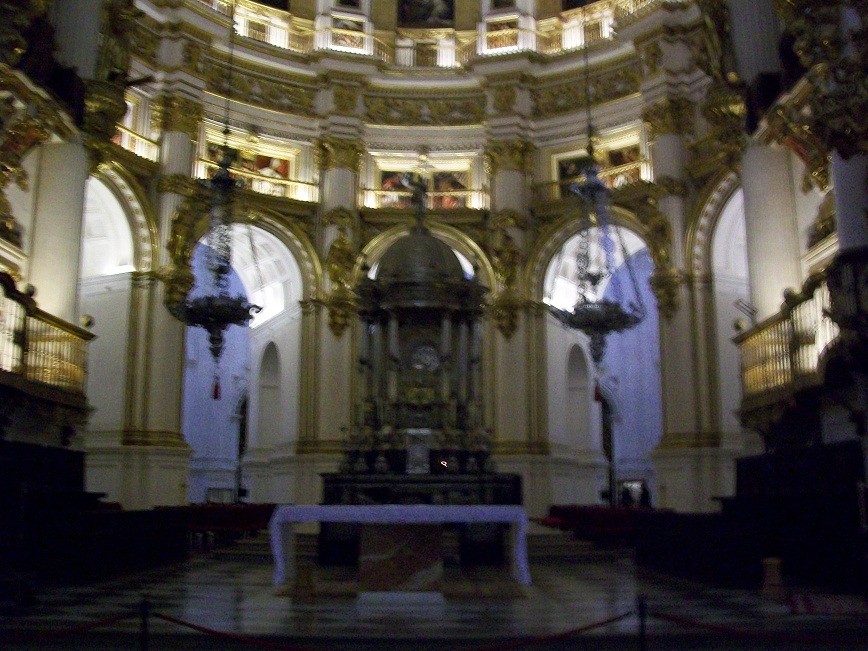
The altar
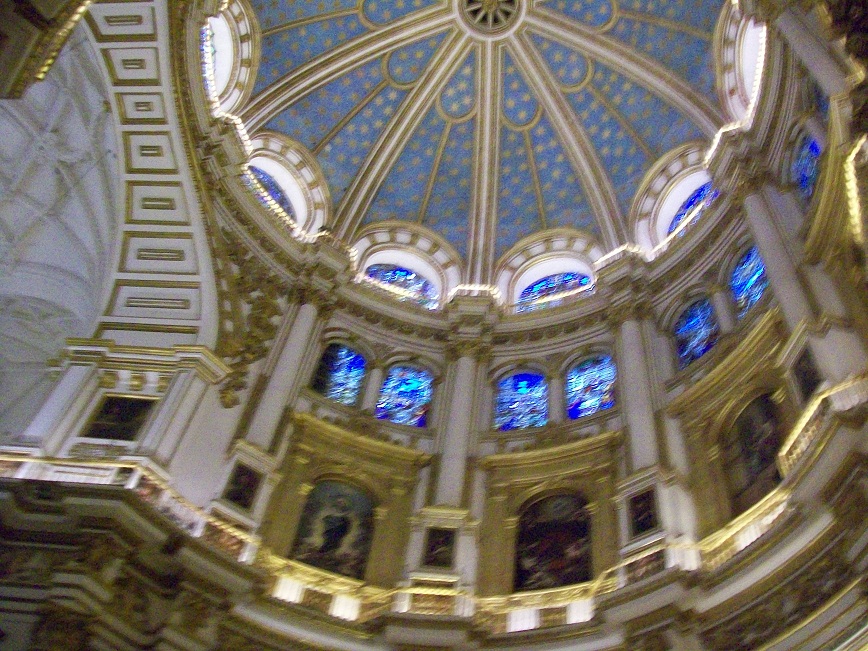
The dome above the altar
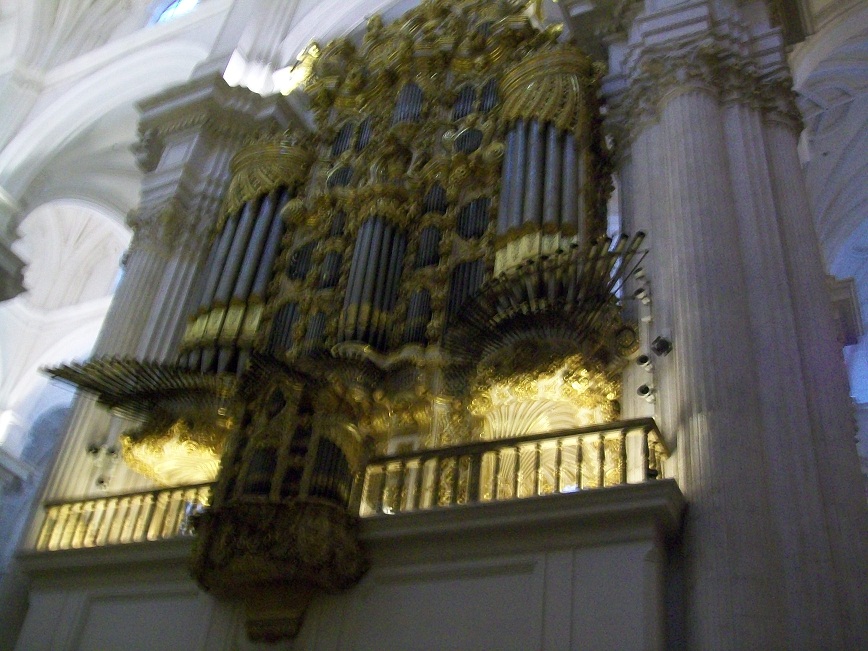
One of several sets of organ pipes
In the weeks before we went to Spain, whenever I told anyone that we were going there, they would always tell me "You've GOT to go see the Alhambra!" So okay, okay already... we SAW the Alhambra! Unfortunately, we saw it in the rain. It had been raining the day before, while we were visiting the Bollens, and we hoped and prayed that the rain would let up by the next day. Alas, it was not to be. It rained pretty much the entire day, which sort of put a damper on things. (I know, it's an old joke...sorry.)
The Alhambra is a major tourist attraction - one of the most visited sites in Spain - so tourists are advised to buy their tickets in advance - which, of course, is easily done in The Age Of The Internet. We had reservations for the afternoon, so our plan was to park at the Alhambra (which, being a major tourist attraction, has a large parking lot) and take a bus into town to visit some other tourist sites, then go back to the Alhambra in the afternoon, take the tour, get the car, and go home.
So we got there, and parked the car, and walked to the bus stop - where we found several enterprising souls selling umbrellas. So we bought one, and then caught a bus, which took us into the Albayzin (or Albaicin... I saw it spelled both ways). This is the city's old Moorish quarter, the usual maze of narrow, twisty streets. Our first order of business was to find a panaderia (bakery) recommended by the guidebook, where we had a late breakfast while we warmed up and dried off.
We had marked several possible things to see and do in Granada, including walking around and exploring the Albayzin, but the rain knocked that off the agenda. Instead, we considered what we could do that would keep us inside, out of the rain. Eventually, we found our way back to the bus stop and took a bus into downtown to see the cathedral.
Of course, there's a cathedral in every Spanish city - we could have spent our entire vacation just seeing cathdrals. But this one was particularly magnificent. Inside, it was all white. Here are some pictures:

The center aisle

The altar

The dome above the altar

One of several sets of organ pipes
Of course, all Catholic churches have places where you can light candles. From Wikipedia: "To 'light a candle for someone' indicates one's intention to say a prayer for another person, and the candle symbolizes that prayer." Well, in the Granada Cathedral, which was built in the 1500's, I was amused to see this modern touch:
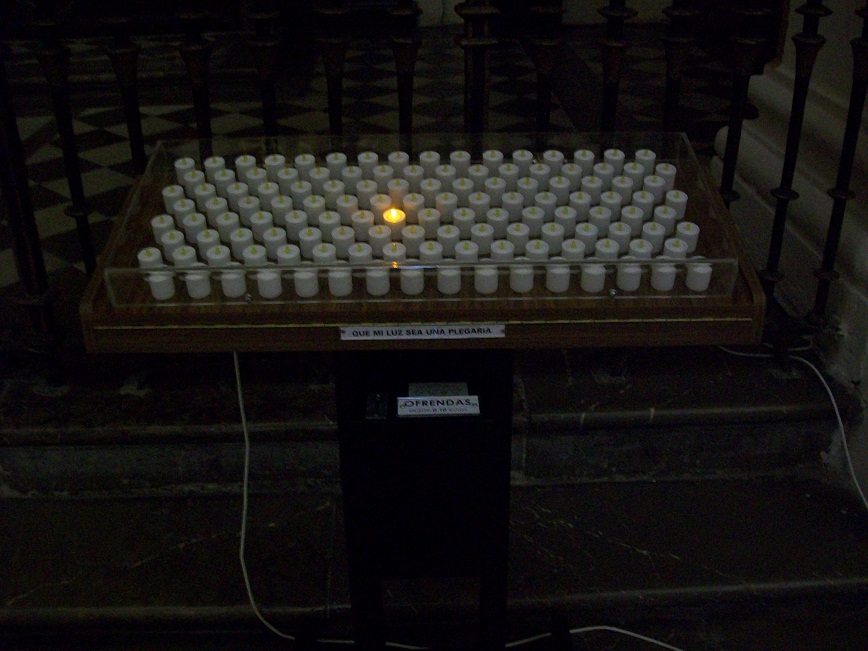
Electric candles!
A couple of other items of interest we saw at the cathedral, although the pictures didn't come out too well:
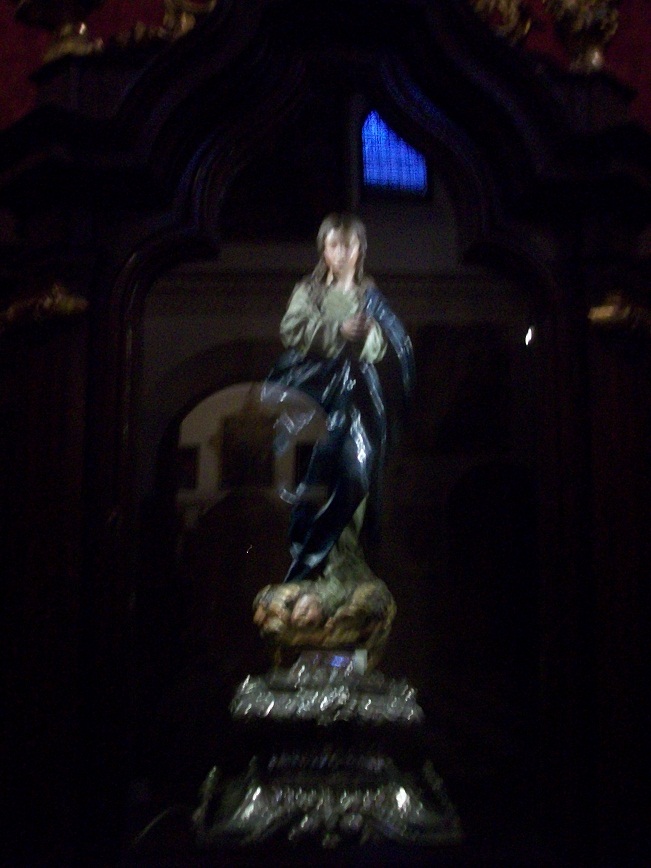
Virgin of the Immaculate Conception, a sculpture by Alonzo Cano
(here's a link to a page with a better picture)
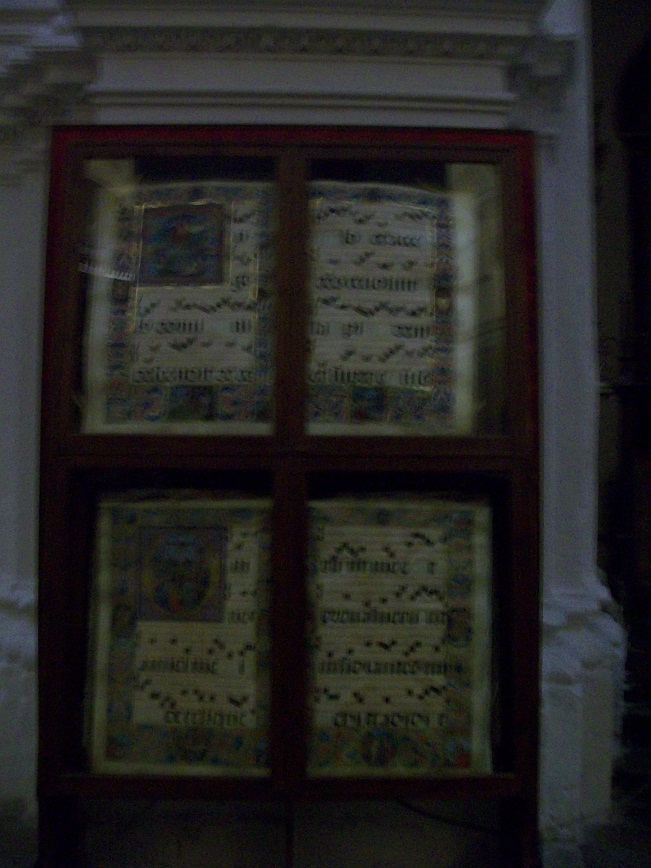
Illuminated manuscripts
After we left the cathedral, we walked a couple of blocks to a resturant where we had lunch. On the intro page, I mentioned the Spanish obsession with ham. There are various kinds of ham, the most common being jamon serrano (w). Well, this place had something called "jamon gran reserva" - in other words, extra special fancy ham. So I ordered some. It tasted... well, it tasted like ham. Subtleties of taste are generally lost on me.
After lunch, we caught a bus back up to the Alhambra (w). The Alhambra is a large palace / fortress complex, built in the 14th century, sitting on a hill overlooking the city. It consists of four major portions:
We started with the Palacios Nazaries. As you might expect, the Alhambra is very large, and it's a 15 minute walk from the main entrance to the entrance to the Palacios. And in our case, it was a 15 minute walk in cold, wet weather. While we were waiting to get in (they only let so many people in at a time) we overheard some American accents - the first we'd heard since we left home.
While we waited, I took a few pictures. I didn't really know what I was taking pictures of, but when I got home, with the help of a guidebook I bought in the Alhambra bookstore, I was able to put names to most of the pictures:
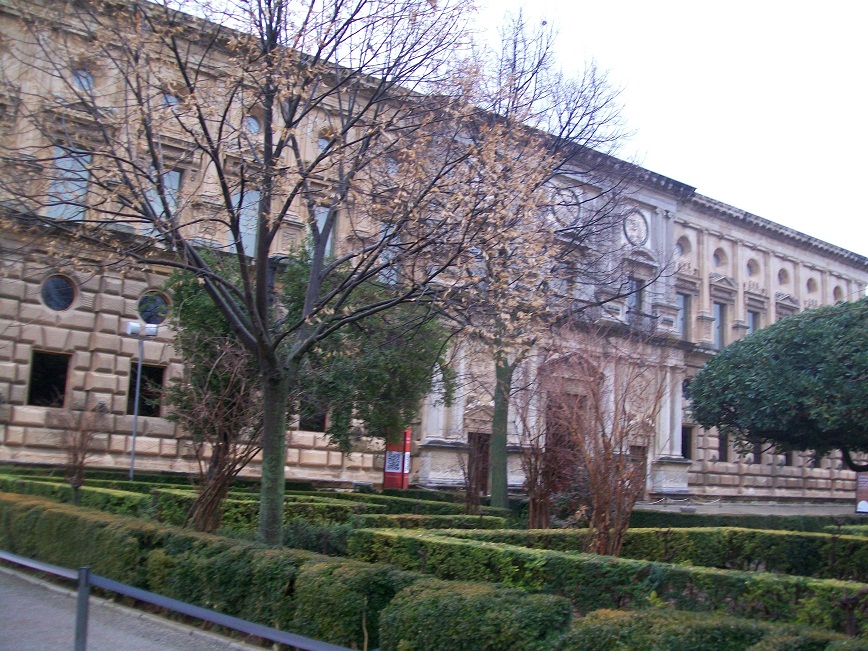
Charles V's Palace
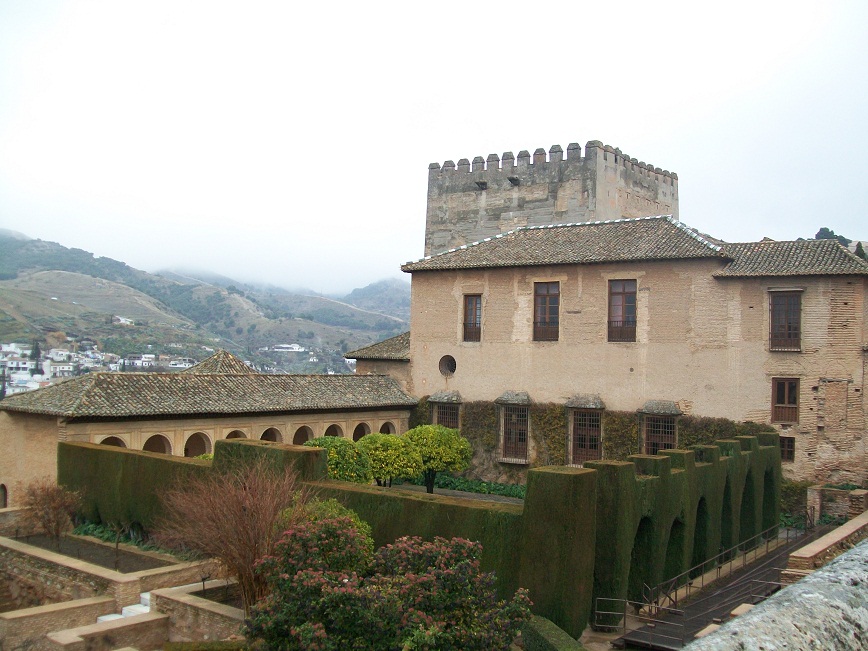
Patio de Machuca and Torre de Comares

Torre del Agua
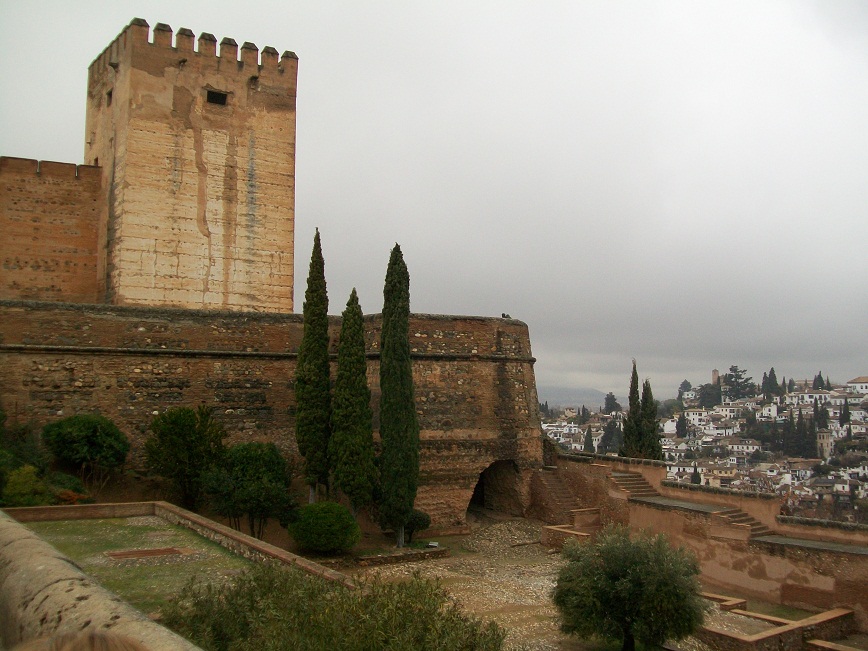
Torre del Homenaje
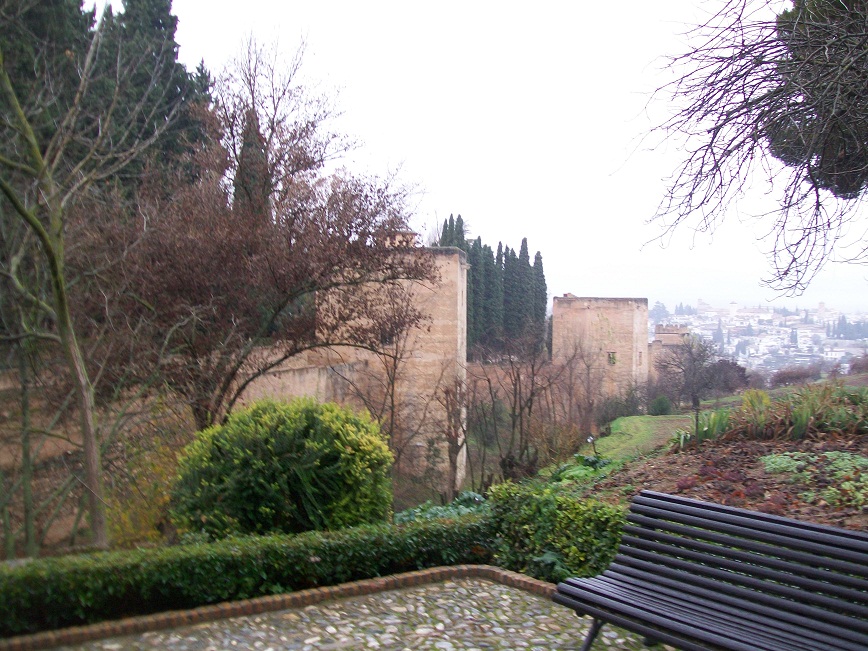
I couldn't identify this one
We had one of those self-guided audio tours - again, Terry listened to hers in Spanish, and I listened to mine in English. The artistry and workmanship at this place is incredible. Here are some examples of the type of intricate scrollwork and geometric tilework that I saw in just about every room:
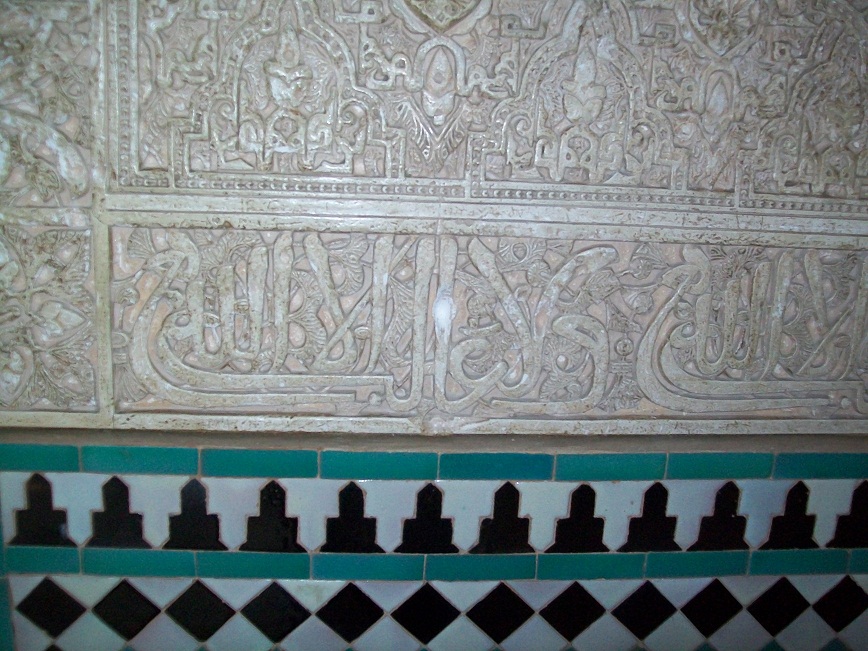

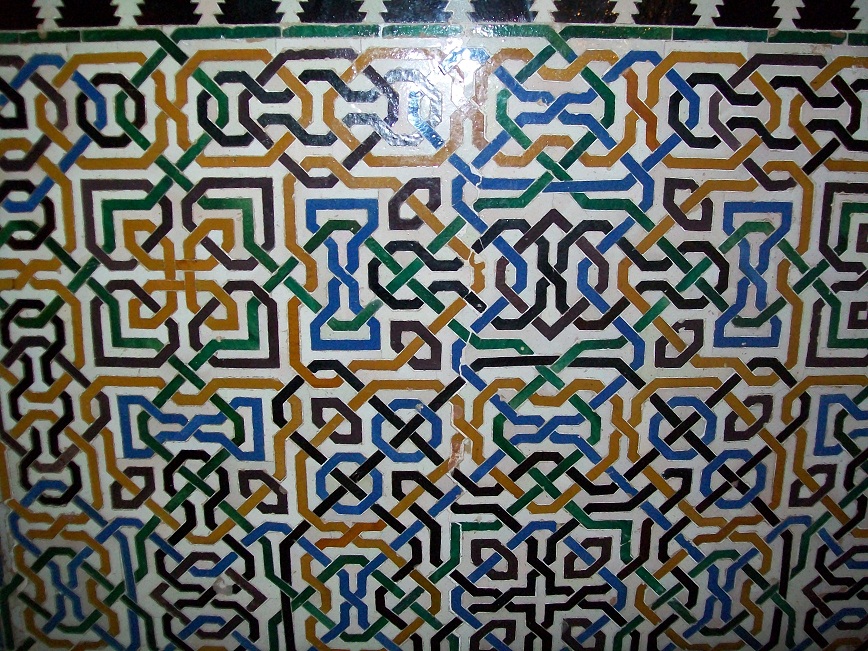
In that first picture, notice that the carving includes Arabic script. Our guidebook said that much of what is known about the Alhambra came from simply reading the walls! I was also interested to learn (from the Wikipedia article) that the artist M. C. Escher got the inspiration for much of his geometric artwork from the Alhambra tilework.
There were also many niches in the walls, which apparently originally held vases. Here'a picture of one:
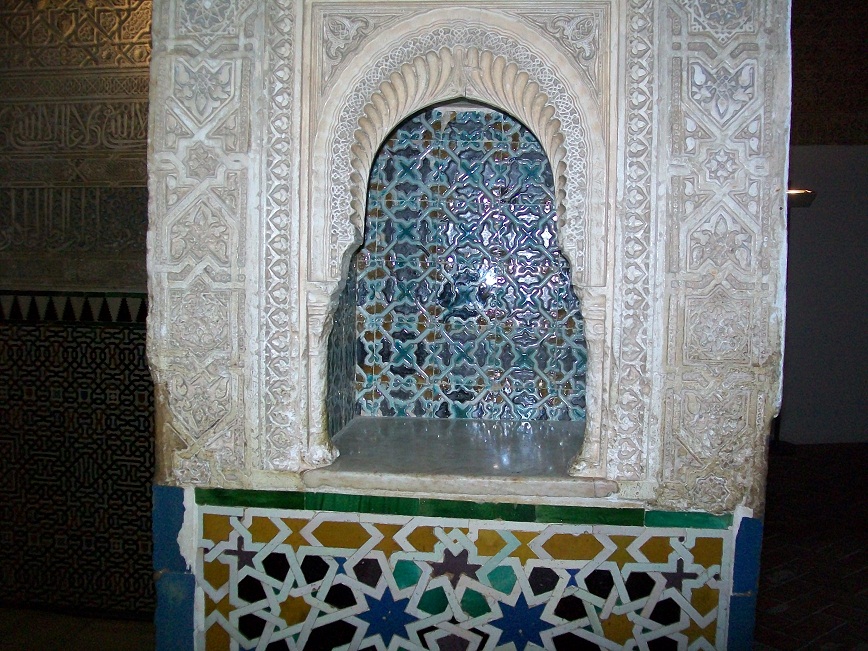
And here are pictures of the various things we saw on our tour, roughly in the order we saw them:
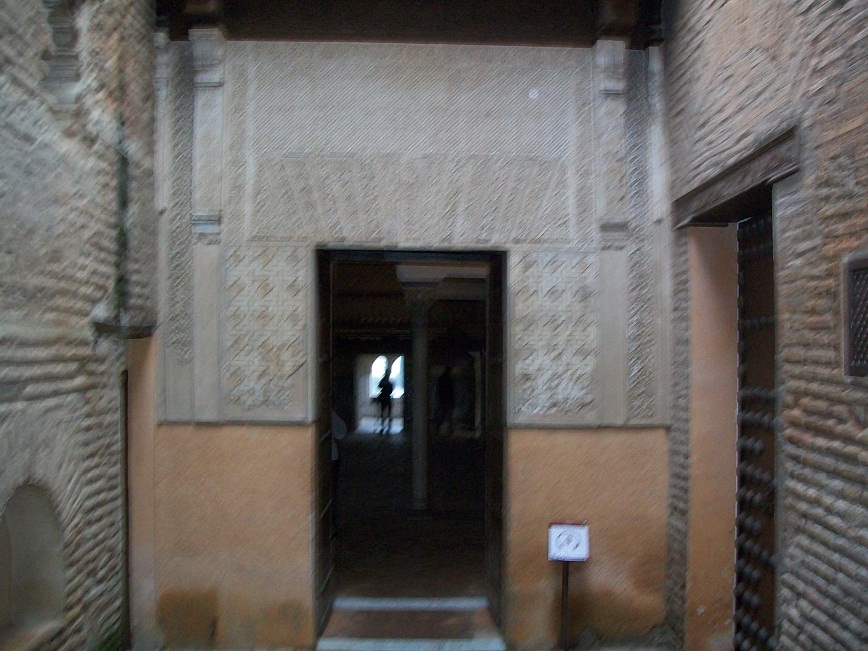
The entrance to the palace
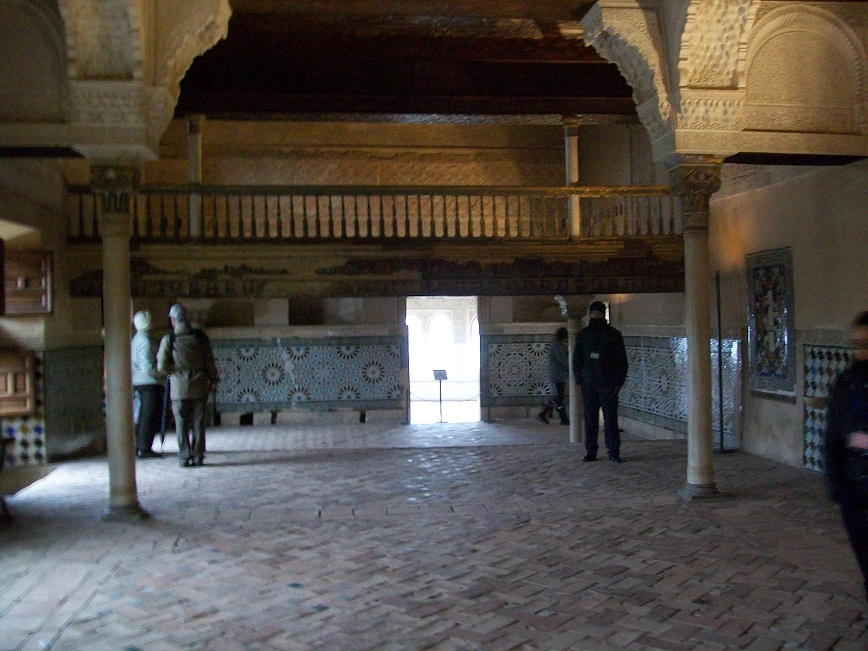
The Mexuar, which according to Wikipedia "houses the functional areas for conducting business and administration"
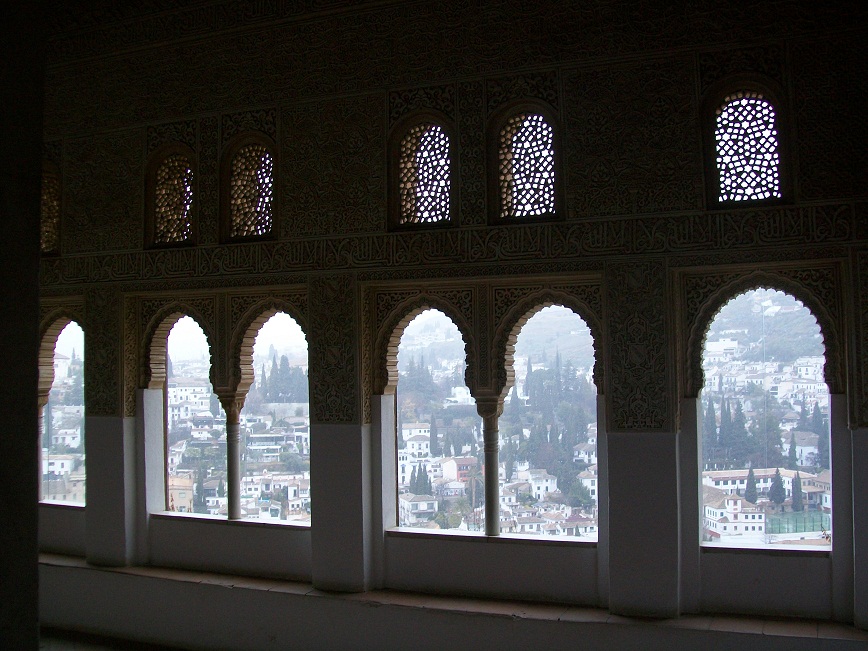
Looking out the windows of the Oratorio
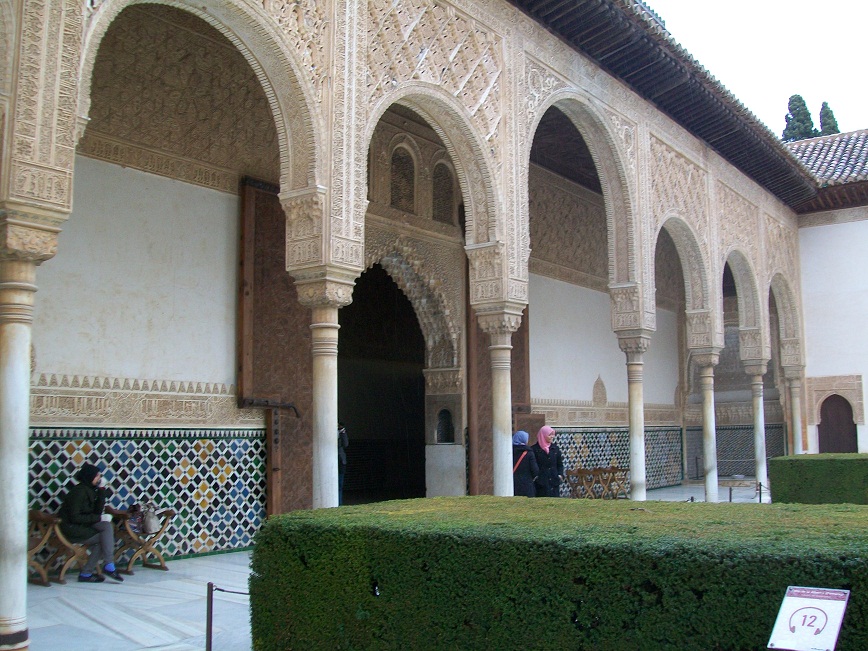
The Patio de Comares
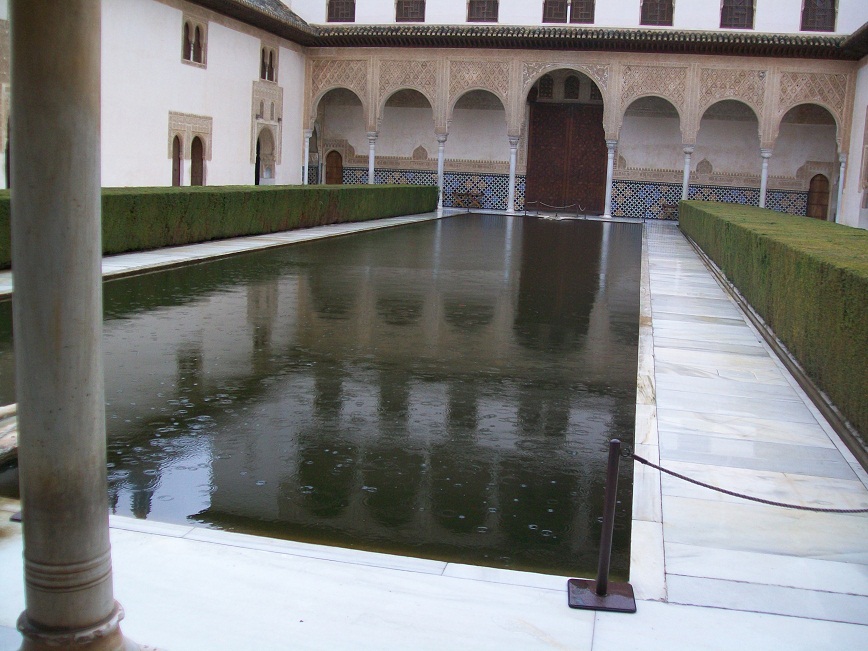
Pool in the Patio de Comares (notice the raindrops in the water)
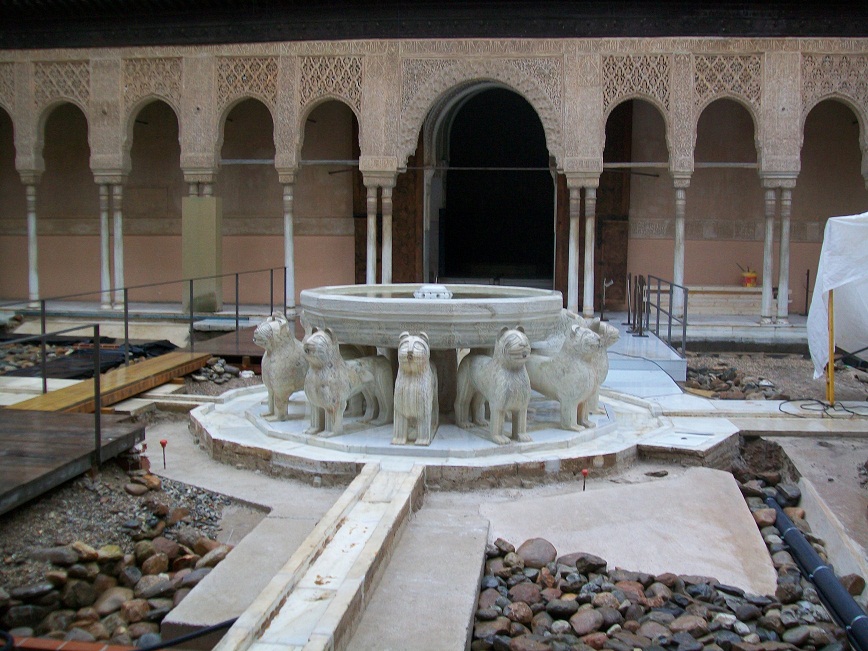
The Patio de Los Leones (which is being renovated, as you can tell from the visible pipes)
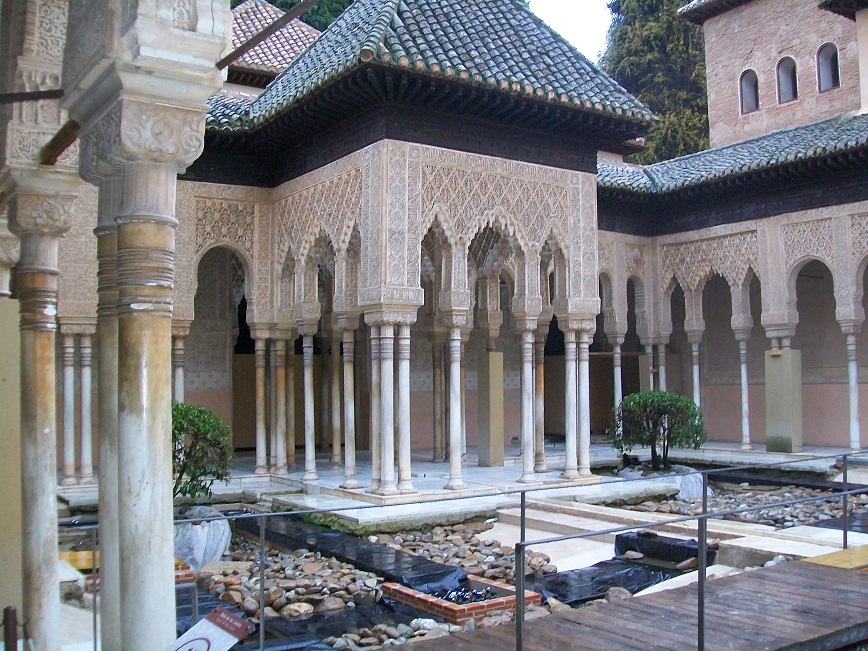
The Patio de Los Leones again
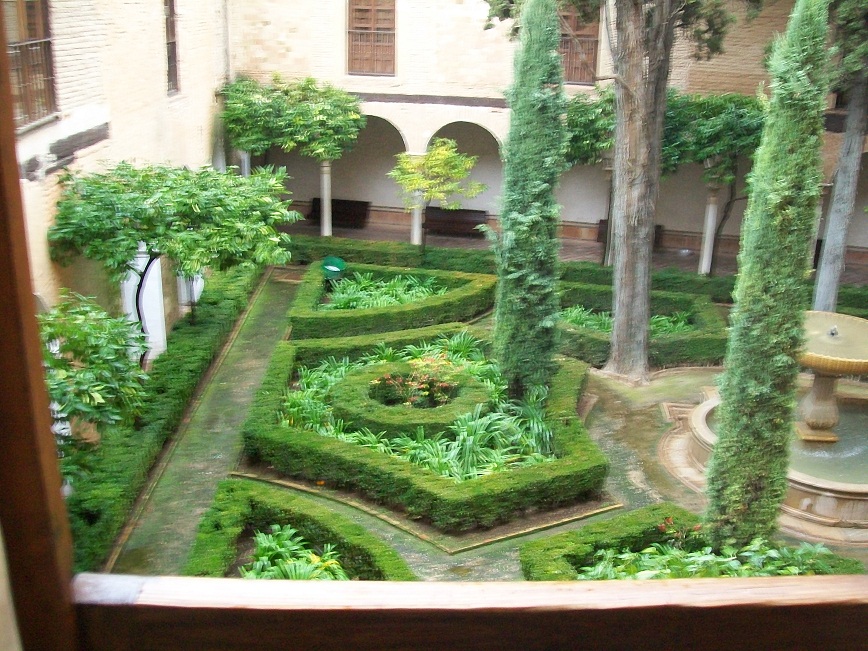
Mirador (Garden) del Lindaraja
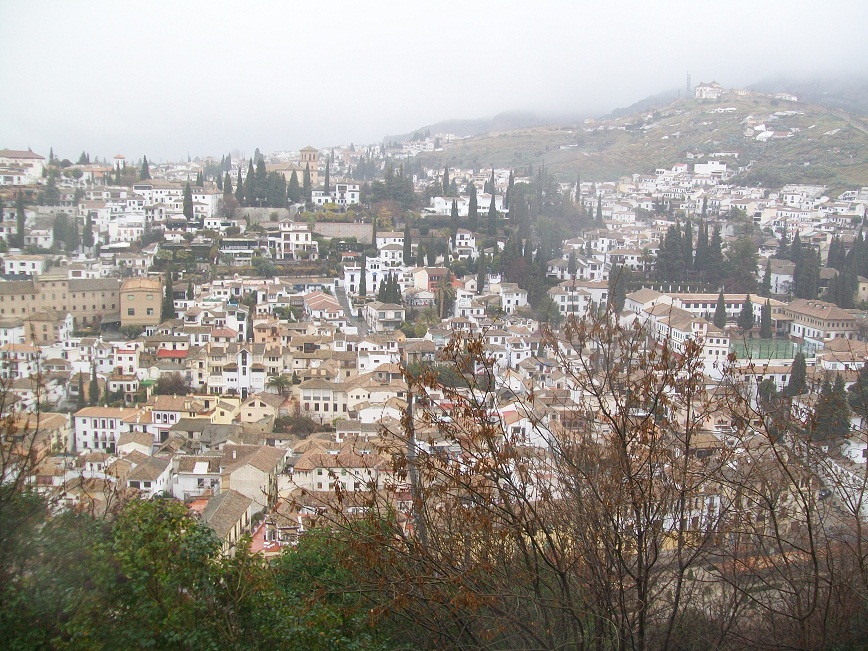
The Albayzin as seen from the Alhambra
One other item of interest - In 1828, American writer Washington Irving visited Granada, to do research for a book he was writing about the conquest of the city. At that time, the Alhambra was no longer a working palace, but not yet a Tourist Attraction. He asked for, and was granted, permission to stay at the Alhambra during his visit, and later wrote a series of essays and short stories called "Tales of the Alhambra." We saw the room where he stayed, which has a commemorative plaque which I didn't take a picture of, but here's one I found on Wikipedia:

Washington Slept Here
Sorry, couldn't resist... actually, it says "Washington Irving wrote his Tales of Alhambra in these rooms in 1829."
After we got home, I got a copy of the book from the library, and as I write these words, I'm about halfway through reading it. The book begins with the account of his travels from Seville to Granada, and when I read it, I was delighted to discover that his journey included stops in both Antequera and Archidona, where we had visited with the Bollens. Like I said... Spain is old.
Well, by the time we were done with the tour of the Palacios, we were sufficiently cold and wet to not want to see any more. So we left, without having seen the Charles V Palace, the Alcazaba or the Generalife Gardens. It's too bad - I feel that we didn't really do the place justice. Oh, well... it gives us another reason to go back.